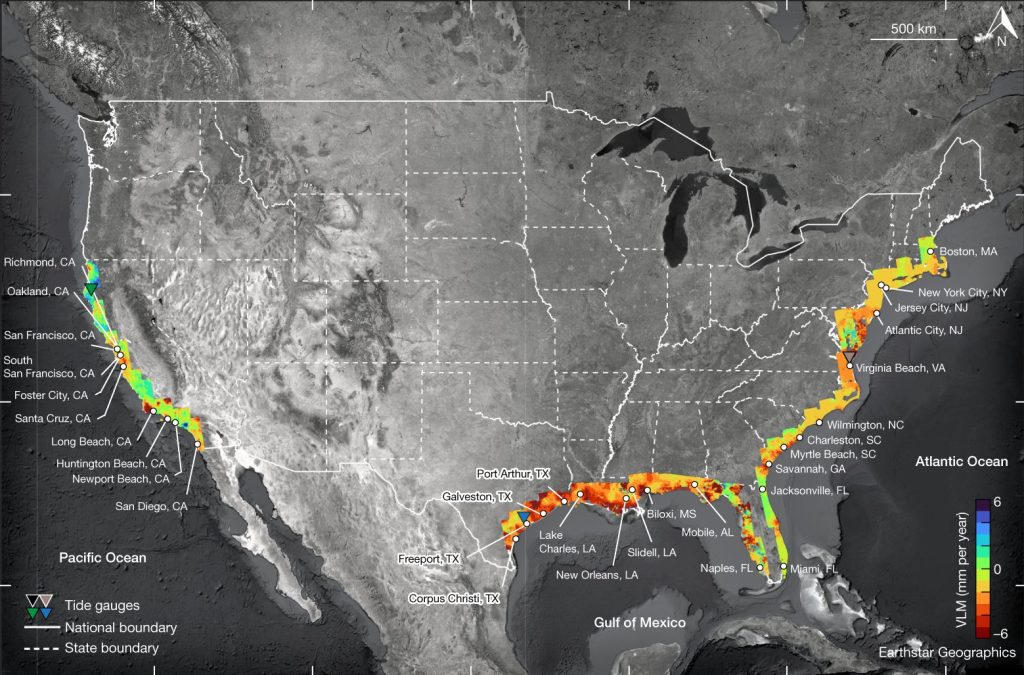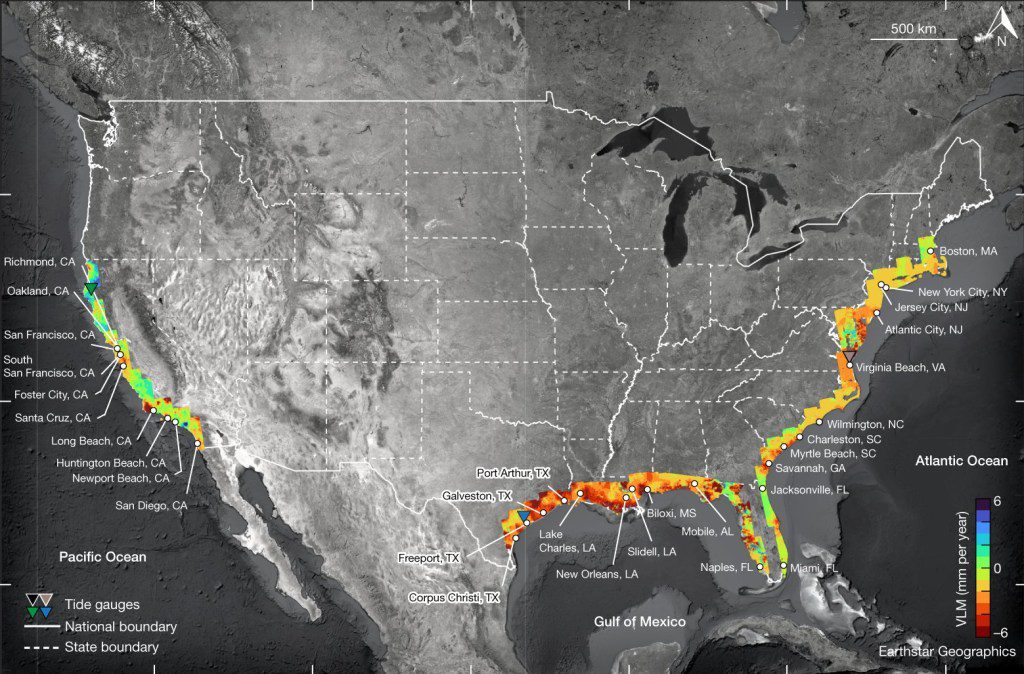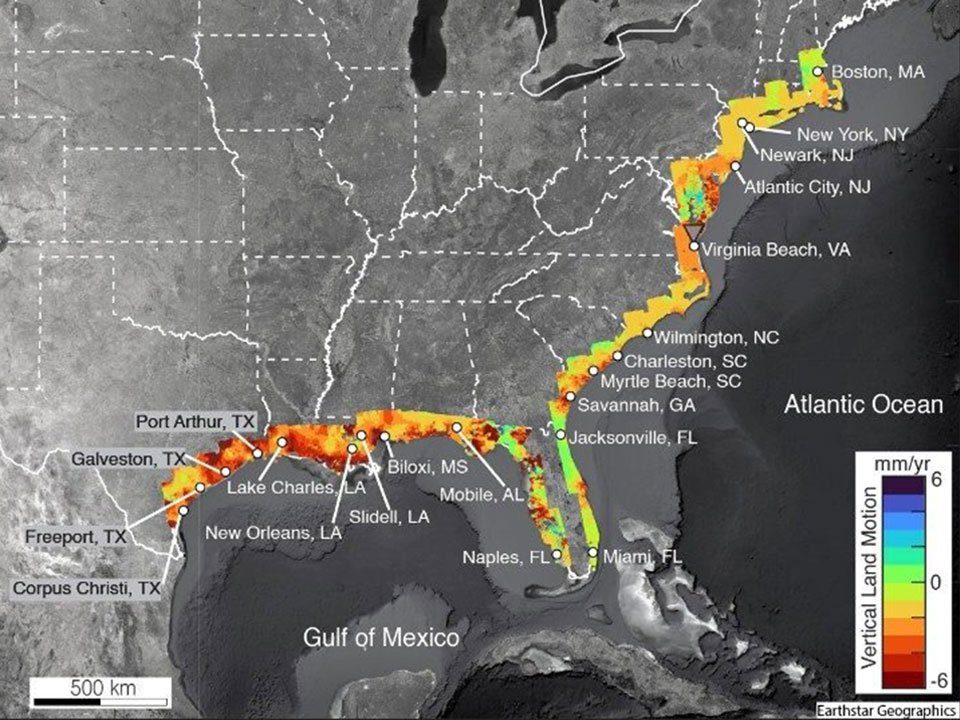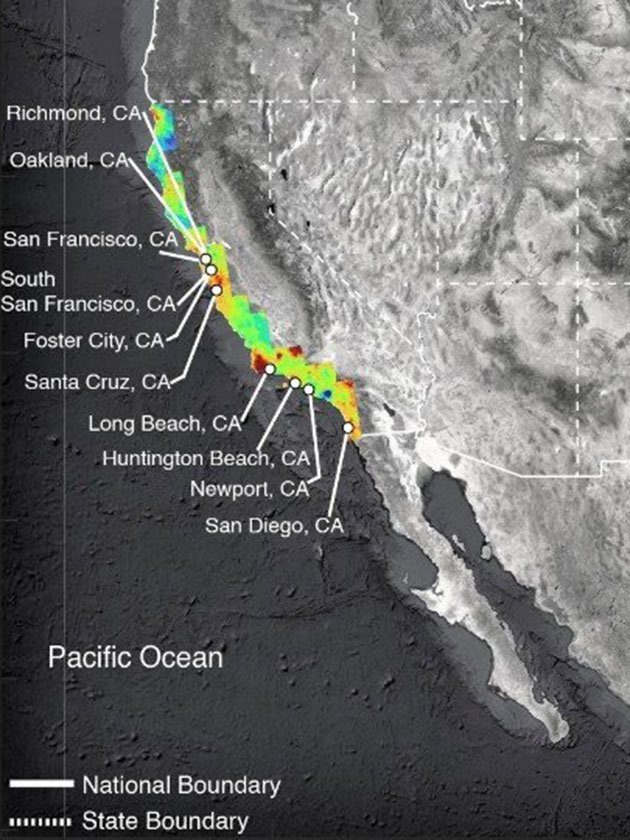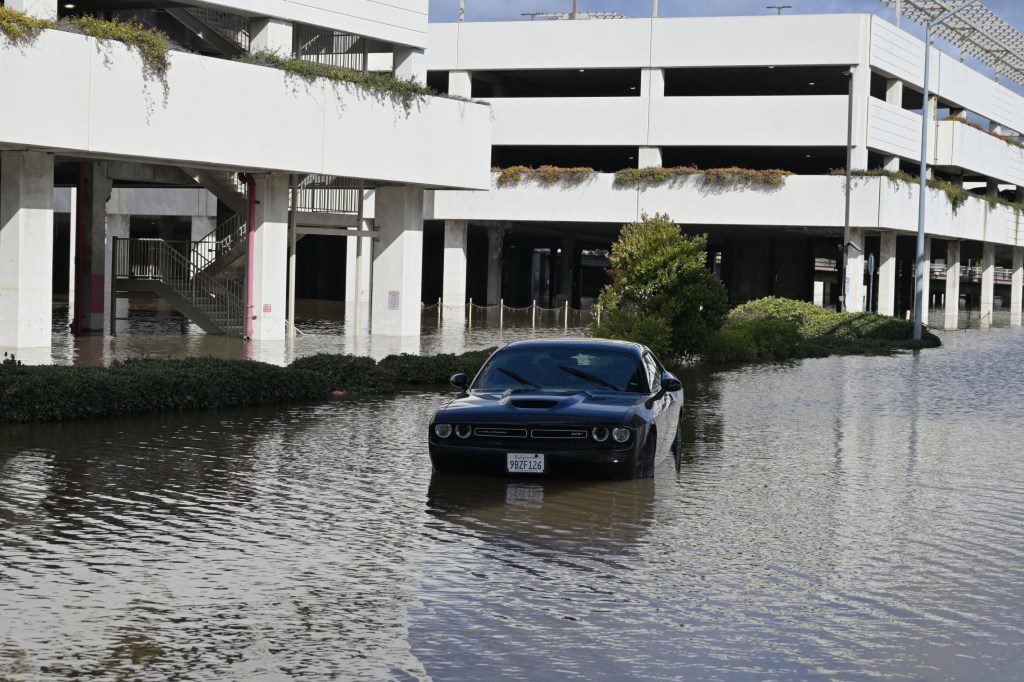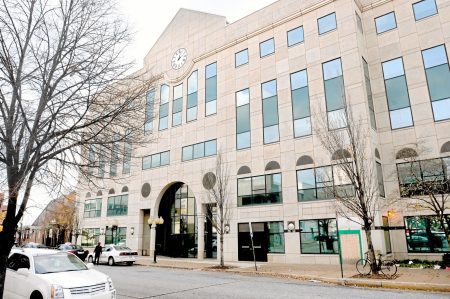Two dozen US Cities face the risk of becoming submerged due to rising sea levels and sinking land.
A new map created by Virginia Tech experts identifies at-risk cities along the Atlantic and Pacific coasts and the Gulf of Mexico.
The analysis published in Nature examined the potential for flooding in 32 cities using projections for rising sea levels, tide charts, and land subsidence measurements obtained via satellite.
It estimates that up to 500,000 Americans could be impacted and one in 35 private properties could suffer flood damage in the next 30 years.
'One challenge in discussing sea-level rise and land subsidence broadly is that it often appears to be a long-term issue, something whose effects will only be seen at the end of the century, which many people may not care about,' explained the study's lead author, graduate student Leonard Ohenhen.
'What we have done here is focused on the short term, just 26 years from now.'
The study, released in early March, revealed that 24 of the 32 cities are sinking over 2 millimeters every 1.5 years, a noteworthy amount in light of sea-level rise over time, stated Ohenhen, who works at Virginia Tech’s Earth Observation and Innovation Lab.
He used a sinking boat metaphor.
'Imagine you're in a boat with a slow leak, causing the boat to sink gradually. That leak is like sea-level rise or widespread flooding,' Ohenhen explained.
'What if it also starts raining? Even light rain would accelerate the sinking of the boat more than expected.'
The 32 cities have a total of 131 flood control structures, but half of them are on the California coastline. The Atlantic coast is particularly vulnerable, with only three of the 11 highlighted cities having floodwalls or levees.
Miami is one of the cities at greatest risk of disappearing underwater. Southern Florida could lose about 80,000 homes, according to experts, putting 122,000 residents at risk and causing an estimated $31 billion in damages.
Certain coastal cities, particularly along the Gulf Coast, also face additional impacts related to socioeconomic and racial factors. The threat in cities like New Orleans, Louisiana, and Port Arthur, Texas, could disproportionately affect racial minorities and properties with a value below the median.
'The purpose of this paper is to provide data to inform decisions,' said associate professor Manoochehr Shirzaei.
'It's probably the first time anyone has seen the complete picture, which likely creates the most complete understanding of what will occur in the near future.'
.





